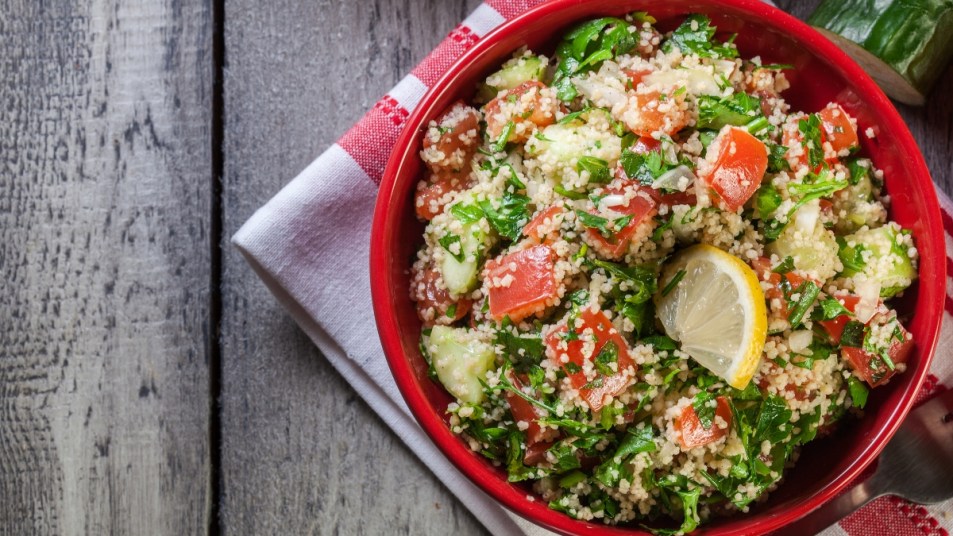How You Plate Your Food Affects How Much You Eat — Here’s What You Need To Know
The way we eat has a psychological component.

When it comes to eating healthy, the way you plate your food may be just as important as the food itself. If you’re trying to eat less, don’t resort to crash diets; instead, be more mindful about how you serve your meals. It’s been said that you eat with your eyes first — and as it turns out, there’s a good deal of scientific research to back that up. We’ve gathered three effective strategies for plating your food so you’ll be tricked into feeling fuller and consuming less. It may sound strange, but it’s definitely worth a try.
Consider your dish color.
Avoid using typical white dishware. Instead, try changing things up by eating off a red plate. A study published in the journal Appetite found that participants ate less snack food from a red plate than they did from a blue or white one. It’s surprising that a color choice could help us have more self-control, but according to the study authors, the results suggested that “red functions as a subtle stop signal that works outside of focused awareness and thereby reduces incidental food and drink intake.”
Use smaller plates.
We perceive food portions as larger when they are served on a smaller plate or bowl, thanks to a phenomenon called the Delboeuf illusion bias. A study in the Journal of Consumer Research showed that when participants were asked to re-create a “target” food serving in bowls of different sizes, the size of the bowl subconsciously impacted how much they took. When they had smaller bowls, they underserved and overestimated the amount of food, while when they had larger bowls, they overserved and underestimated the amount of food. In other words, subjects with smaller bowls took less food than they intended, while those with larger bowls took more food than they intended. Try replacing big white plates with small red ones, and you just might find that you eat less without even trying.
Use skinny glasses.
Unconscious perceptions also come into play when we serve drinks. Alcohol can cause weight gain, and drinking responsibly is generally considered good for your health — so if you want to drink less, you might consider changing up the glasses you use. A study in The BMJ found that when bartenders poured shots of alcohol into two separate glasses, one tall and slim and the other short and wide, they consistently poured more into the short, wide glasses than the tall, slim ones. If even professional bartenders over-pour when given a shorter glass, it’s safe to say you may do the same thing without even realizing it. Similar to the plate size phenomenon described above, people naturally tend to overestimate portion size when pouring liquid into a tall, narrow glass and underestimate when using a short, wide glass. So buy yourself some skinny glasses for the next time you’re enjoying a tipple at home.
This article originally appeared in our print magazine, First For Women.
















